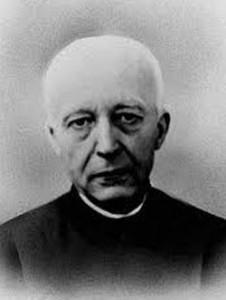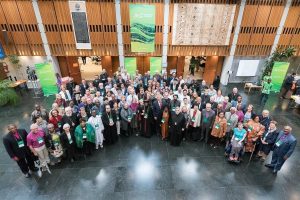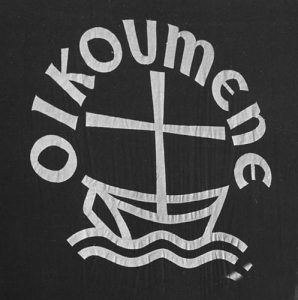An inter-confessionnal initiative
The Dombes Group was the result of an initiative of Abbot Paul Couturier (1881-1953), and Pastor Richard Baümlin from Basel.
When asked to organise the prayer for unity in 1933 Abbot Couturier encountered difficulties with criticism on his comments about separated Churches. He wished to submit a prayer with a universal orientation. But it was impossible to have strong foundations unless inter-confessionnal work could confront the sensitive issues, such as doctrine on the one hand, and spirituality on the other. Sharing his questions with other priests, he heard about similar endeavours in Protestant circles led by Pastor Richard Baümlin in German-speaking Switzerland. He contemplated creating a reflection group. So that in 1937 four priests and two pastors, determined to start this difficult reflection work, met at the Cistercian Abbey of the Dombes near Lyon, France. The Dombes Group was born.
The Dombes Abbey was the main meeting place until 1997. Meetings sometimes took place at the Community of Taizé. They were meaningful because the group could hear the concerns of young people, who regularly met there. They found it difficult to understand the obstacles to intercommunion. Since 1988, the Group meets at the Pradines Abbey, in the Loire region. Meetings are always held in the first week of September.
First works, 1937-1970: towards the communion of Churches? The writing of theses on doctrinal topics that divide.
During the first years, the Dombes Group was devoted to examining doctrinal topics. The works focused on the history of the Church, on texts and debates of the fathers of the Church, against the background of the separations. The works also dealt with the content of the doctrines that divide. Their work was interrupted during WWII and resumed with a larger group of twelve priests and twelve pastors.
In 1957 the group considered it could start writing several theses for internal use only. The first text dealt with confessional differences on original sin that arose in the 16th century: the Catholics linked it to the nature of mankind, whereas the Reformed associated it to the themes of grace and salvation. Actually, the two approaches did not deal with the same problem. The doctrinal point could be reformulated and would then end the division. There were 11 more theses. The last one The Church, communion of the saints, was written in 1970.
After Vatican II, from the Communion of Churches to the Conversion of Churches: writing documents for external use
Following the progress of the inter confessional dialogue supported by Vatican II, the Dombes Group was able to publish working documents for a broader public. The group was enlarged comprising twenty priests and twenty pastors and specialists also collaborated, depending on the topic covered. As the theses investigated the obstacles to the communion of Churches, the next step was to study what could or could not make it more concrete. It was the issue of the conversion of Churches. Then were tackled the problems affecting intercommunion, especially Eucharistic faith, the ministers’ authority, apostolic succession, etc. Writing the documents could take years, and they were rich in historical chapters and reported theological debates. In 1990 the document that aimed to the conversion of Churches was published. The group then felt able to deal with sensitive doctrinal topics, such as the figure of Mary or the communion of the Saints always in a context of open dialogue.
The Dombes Group documents were and still are extensively used for study, notably by the Faith and Order Commission of the Ecumenical Council of Churches that prepared the document Baptism, Eucharist, Ministry, presented to the Conference in Lima in 1982.
The documents were also extensively used in inter-confessional parochial groups, facing problems of mixed couples, and more generally anxious to find the paths to a constructive dialogue.






